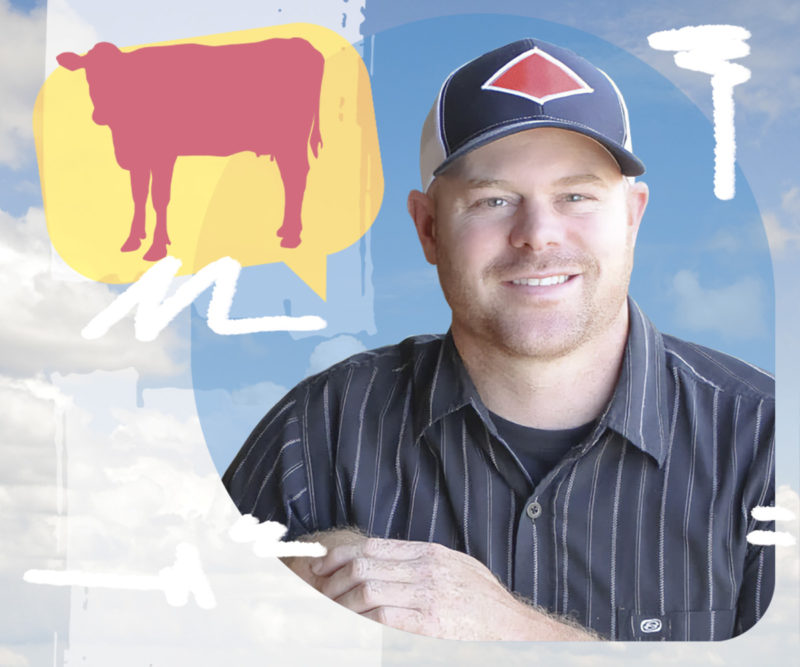It was about 10 years ago when our local young cooperators group from Darigold had the opportunity to visit the corporate headquarters of Starbucks. Our group was more excited than Mrs. Faber on the first day of fall with leaves changing color and a pumpkin spice latte in hand while putting fall decorations up around the house.
It was a simpler time for them, no evil union talks and no CEOs telling consumers to avoid dairy. As a side note, the CEO’s call to avoid dairy elicited a response from many dairy farmers, which ultimately led to communication with the local Washington dairy industry on their sustainability practices.
Our visit was particularly interesting in the fact they revealed that every day Starbucks serves the amount of milk produced by 50,000 cows. At its core, Starbucks is a milk company. Our presenter, however, was also involved in the risk management part of the company, and every day her team is looking for ways to take risk off the table and get hard numbers on input cost. This means that, daily, they are looking to be buyers on the futures market of coffee, milk and sugar contracts. These solid numbers allow them to go back to shareholders with forecasts of profitability per share. A miss on earnings projections is treated like a 95-point cow that just came back with a terrible genomic number.
Predictability is everything. To the point, when asked if her risk management team made money, she responded with, “We lose millions of dollars every year.” This is a concept that is more difficult for us in the dairy industry to understand. Most dairy farmers have presold milk at one time and had to face the wrath of a business partner, spouse or father walking into the office with a milk statement loss that “could have bought a pretty nice new pickup.” This results in much disdain and comments like, “I’m going to Chicago to see where all my money went.”
The bad news is: Our banks today are seeking predictability just like shareholders. Our job is to limit downside risk and bring numbers in that are reliable to avoid surprises down the road. The great news is: The dairy industry has more tools in the toolbox than a suburban dad after a weekend sale at Harbor Freight. Every dairy’s marketing plan should start with the Dairy Margin Coverage (DMC) program, which has a higher payout than a Nancy Pelosi defense stock purchase. This program is limited on the volume of milk to 5 million pounds per year, but it is a great starting point. After this, Dairy Revenue Protection (Dairy-RP) provides a subsidized put, or floor, on your Class III or Class IV milk production and is not limited in volume. Livestock Gross Margin for Dairy (LGM-Dairy) is another product that allows a producer to hedge the spread between feed and milk production. A point of order is that you are not allowed to participate in both Dairy-RP and LGM-Dairy concurrently. There is also a futures market for Class III and Class IV milk to sell milk contracts and engage in options trading. Consult a brokerage to help you navigate the market.
Futures and options offer unlimited risk and are not suitable for all investors, especially if your spouse finds out you canceled the Hawaii trip but lost $50,000 on a milk contract. An important note is to continually monitor markets. There is a human condition to be fearful when everyone is fearful and greedy when everyone is greedy. Dairy-RP reached its highest levels in March 2020 at the bottom of the market. Buying at those times is equivalent to calling your insurance agent to buy insurance on a burning house. There are, however, a couple of ways to not need to worry about marketing, and one is by having an incredibly low cost of production where you grow a massive amount of feed on-farm.
The other way is summarized best by Paris Hilton, “Have you tried being rich?” Having a high level of equity and the bank will allow you to dairy without a care to current milk or feed prices. The unfortunate reality for the rest of us is: We need to act more like a corporation slinging pumpkin spice lattes and manage the risks associated with production so we can bring consistency and predictability to our bankers.
'Til next time, keep the cows fed, the teats clean and take some time to enjoy the pasture.





